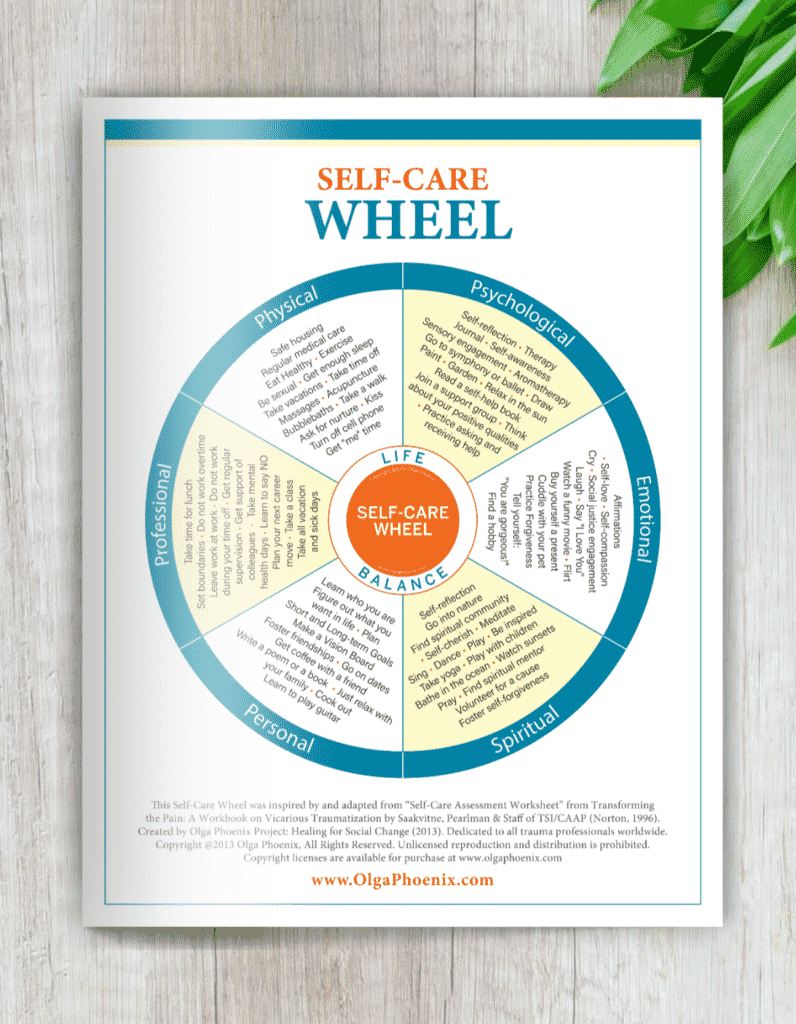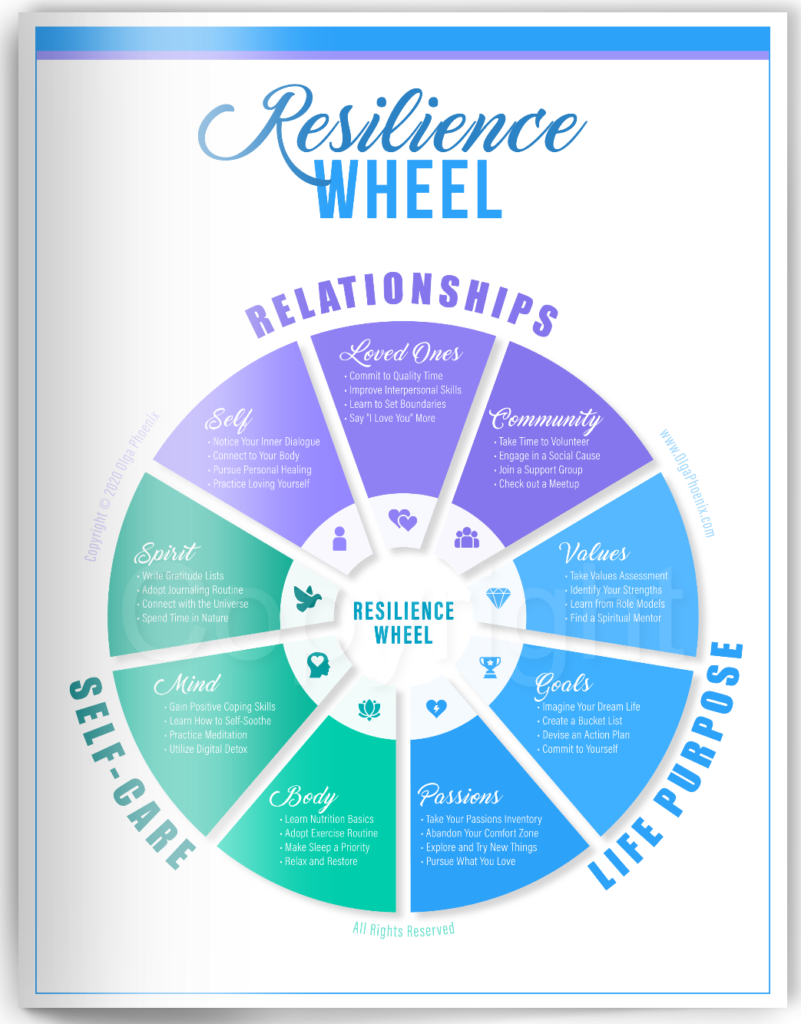
Your Lifehack to Organizational Self-Care!
Single most important factor that negatively impacts health and wellbeing in organizational contexts is the organization itself: how does the agency works, how leadership relates

Vicarious trauma develops as a result of traumatic material we have been exposed to, directly (ex.: witnessing a traumatic event in person) or indirectly (ex.: witnessing a traumatic event in media), in our personal or professional lives.
Often it is ongoing exposure to traumatic events -for example, 24/7 news or social media coverage of police brutality, mass shootings, and death toll as a result of the pandemic that results in us developing vicarious trauma symptoms. Traumatic material we witness on daily basis accumulates and begins to impact us cumulatively, like a snowball thrown on the top of the mountain that eventually becomes an avalanche.
The amount of exposure we have to traumatic material, gore, raw fear and pain, death, and murder often delivered to us in real life through the eyes of the camera is unprecedented and over time has the same profoundly traumatic impact as if we were right there, in the middle of a traumatic event, in person.
Such ongoing exposure negatively impacts our worldview, our sense of trust and safety, produces feelings of powerlessness, hopelessness, anger, fear, and disconnects us from humanity. One clinical study found that 22% of participants scored high on clinical measures of post-traumatic stress disorder after watching traumatic events on social media, even though none had a previous history of trauma (Ramsden, 2015, 2017-see references below).

Vicarious trauma has a multitude of symptoms and affects us on physical, psychological, behavioral, spiritual, cognitive, and relational levels:
People at the highest risk for vicarious trauma symptomology have a personal connection to the trauma they witness (for example, Black people witnessing police brutality and murders in the news); feel powerless over traumatic events, don’t see the reality changing in the foreseeable future, or don’t know how to positively contribute to changing the reality (for example, people negatively impacted by the death toll and uncertainty of covid-19 before the development of vaccine); have high degree and frequency of exposure to traumatic content in media; lack of awareness about vicarious trauma and real dangers of traumatic material exposure and as a result, lack of effective self-care and resilience building tools to combat the effects of vicarious trauma.

Quick lifestyle adjustments like reducing traumatic media exposure, prioritizing sleep, nutritious meals, spending more time outside, moving your body, as well as getting involved in social justice advocacy work or volunteering for a cause can be very helpful. But the most effective and sustainable way to address and prevent vicarious trauma is through building resilience.
In the past few decades, the concepts of resilience and wellbeing were studied very extensively and were directly linked as vital and necessary parts of one another. The state of wellbeing- an experience of good physical and mental health, high life satisfaction, a sense of meaning and purpose, and an improved ability to manage stress- was directly connected to the concept of resilience. Fostering resilience offers us not only a priceless opportunity to handle stress and adversity more effectively, but with commitment and practice, actually affords us a sustainable state of wellbeing, happiness, and overall life satisfaction despite of what was happening in the world or our lives.
I like to think of resilience building as an ongoing process of using a set of personalized strategies that results in a sustainable state of wellbeing. At its foundation this process of resilience building consists of 3 main components: practicing self-care, nurturing our relationships, and living life with purpose. Below are 3 essential steps to build resilience and cope with vicarious trauma as well as some examples of how this looks in real life.

Self-care is an intentional ongoing lifestyle that allows us to be, feel, and live at our best. It goes far beyond occasional “treat-ourselves”, luxury, “something extra” activities like massages, bubble baths, and vacations. Real self-care nurtures, sustains, and improves our body, mind, and spirit. It also mitigates the physical and psychological effects of vicarious trauma.
Some examples of self-care activities:
Most people struggle with practicing self-care. If you are one of them- I highly recommend you check out the Self-Care Wheel, one of our most loved wellbeing tools. It contains 88 self-care activities and has been successfully used by hundreds of thousands of people worldwide since 2013! Free download below!



One of the greatest contributors to our resilience and wellbeing is the quality of our relationships with ourselves, with our loved ones, and with our community. Nurturing relationships with ourselves makes us very aware of our discomforts, stressors, and act as a signal for us to positively cope and self-soothe, as well as give us a nudge to go seek help when our own efforts are not enough.
Strong interpersonal relationships, support groups, and our community at large provide us with a sense of safety, create belonging, improve self-esteem, and as a result, act as a protective barrier against life stresses and vicarious trauma.
Some of the things we can do to foster relationships with ourselves:
We can nurture our interpersonal relationships with others by:

Finding meaning and purpose in our lives is very powerful for cultivating resilience. The more we feel that our existence is meaningful and purposeful- the more empowered, centered, peaceful, and joyful we become. This is because purpose and meaning give us clarity in our lives, help us carry on when things get tough, give us a sense of personal accomplishment, and a strong feeling that we matter.
It also eradicates the feelings of hopelessness and powerlessness imposed on us by vicarious trauma. One of the ways to cultivate our life purpose is to intentionally pursue our personal and professional growth, set and achieve goals, learning something new. It boosts our resilience and wellness by producing a sense of personal accomplishment, improving self-confidence, raising self-esteem, and creating a sense of purpose in life.
Some of the examples of cultivating life purpose:
There are thousands of resilience-building and vicarious trauma prevention activities out there, we just need to find what works for us, what we need at this moment, at this particular time of our lives. Discovering what works for us, creating a sustainable resilience and wellbeing building plan, and engaging in ongoing practice-will result in vicarious trauma prevention, improved physical and mental health, stronger relationships, and a sense of meaning or purpose-thus greater wellbeing and high life satisfaction.
For more resilience-building tips, please check out our tool, the Resilience Wheel. It features 3 core components of resilience-building: sustainable self-care, nurturing relationships, and living with purpose along with 36 simple yet powerful strategies to help you increase and sustain your sense of resilience and wellbeing during these challenging times. It’s available for a free download at https://olgaphoenix.com/resilience-wheel/. Also, check out our online course “Path to Wellbeing: Bouncing Back with Resilience Wheel” to learn more.

Vicarious trauma and its symptomology are very serious mental health consideration. Vicarious trauma affects thousands of people around the world today. It’s very important to remember that vicarious trauma is a completely normal reaction to traumatic events we witness daily. As a rule of thumb, when our physical, psychological, or behavioral symptoms or ways of coping with our symptoms (for example, substance misuse) start to interfere with our ability to function effectively at work, at school, in our interpersonal relationships, or social life-it is a good idea to consult a mental health professional. Therapy saves lives every day and helps us find our way back to health, happiness, balance, and peace.
For more information about how to address vicarious trauma and build resilience on an organizational level, please check out our online course “Strategic Resilience: Your Agency’s Guide to Wellbeing and Vicarious Trauma Prevention” and watch free content.
About the Author
Olga Phoenix, MPA, MA is an internationally recognized self-care, resilience, wellbeing, and vicarious trauma prevention expert, speaker, and best-selling author. She is the creator of the Self-Care and the Resilience Wheels, some of the most loved self-care and wellbeing tools in the world. Her keynotes, trainings, consulting programs, the online academy, and books empower and inspire individuals and organizations to grow and flourish. For more information, tips, tools, courses, and trainings, please visit www.olgaphoenix.com.
References:
Ramsden, P. (2015). British Psychological Society. “Viewing violent news on social media can cause trauma.” ScienceDaily. ScienceDaily, 6 May 2015. https://www.sciencedaily.com/releases/2015/05/150506164240.htm
Ramsden, P. (2017). Vicarious trauma, PTSD and social media: Does watching graphic videos cause trauma? Retrieved from Journal of Depression and Anxiety website: https://www.longdom.org/proceedings/vicarious-trauma-ptsd-and-social-media-does-watching-graphic-videos-cause-trauma-37421.html

Single most important factor that negatively impacts health and wellbeing in organizational contexts is the organization itself: how does the agency works, how leadership relates

Dearest WonderPeople! Lately I’ve been getting a lot of questions about self-care and building emotional resilience in these turbulent times. Here are some of my thoughts